News
The Camera is Haunted: An Interview with Polaroid director Lars Klevberg
A haunted Polaroid camera kills everyone it photographs. This was the premise of a fifteen-minute short film called Polaroid, which was directed and written by Norwegian filmmaker Lars Klevberg, who made the short film for the express purpose of turning the concept into a feature. Klevberg’s wish has come true.

When it was screened in 2015, the short film quickly attracted Hollywood’s attention. Producer Roy Lee, known to genre audiences for the Grudge and Ring films, immediately recognized Polaroid’s feature potential. “When I saw the short film called Polaroid, I knew right away that it was a strong enough concept to develop into a feature film,” says Lee. “It takes a lot to scare me these days, because I’ve probably seen more horror movies and short films than anyone else in Hollywood, for work and as a fan of the genre. Polaroid scared me when I was watching it on my laptop in my office. I believed that if we could expand the short film into a full-length feature film, it would deliver an experience as scary as The Grudge or The Ring.”
Instead of hiring a new director to adapt Polaroid, Lee picked Klevberg. “I could tell right away that Lars was a talent whom I wanted to be in business with,” says Lee. “Lars came up with the concept and put together the amazing short film, so there was no one better suited to turn it into a feature. He was able to create a strong feeling of dread and tension in a limited amount of time in the short film, and I knew that it would be great to see what else he could accomplish with more screen time.”

The feature version of Polaroid, which was written by Blair Butler, tells the story of Bird Fitcher (Kathryn Prescott), a high school loner who takes possession of a vintage Polaroid camera. Bird soon discovers that the camera houses a terrible power: Everyone who has their picture taken by the camera meets a violent death. Bird and her friends race to solve the mystery of the haunted camera before it kills them.
In May, I had the chance to interview Klevberg about Polaroid, which was originally supposed to be released in August. Polaroid is now scheduled to be released on December 1, 2017.
DG: Lars, can you talk about the journey that you, and Polaroid, have taken over the past three years, from the production and release of the short film, to having your project optioned by Hollywood, and then the process of turning your short film into a feature, and now its imminent release?
LK: It has been a very busy year. I jumped on a plane in January to start a very short prep. We shot for twenty-five days, and then I touched ground in Norway, before I went to L.A to start the post-production, which is what I´m doing right now.
DG: Lars, when you made the short film, did you envision its feature potential, and how would you describe the process of turning a fifteen minute short film into a feature?
LK: Yes. When I wrote the script, I knew this had the potential to be picked up in Hollywood. So I already had a plan for it then. And it did. The core idea was very thrilling and scary. The process has been interesting indeed. When you’re working for Bob [Weinstein] and his team, you pretty much have to be prepared to saddle-up at any moment. Making the feature has been a faster process than the short, and that says a lot.
DG: Lars, for those who haven’t seen the short film, what are the biggest differences between the short film and the feature film, and what were the biggest challenges you faced in terms of transforming the short film into a feature length screenplay?
LK: In terms of bringing a short into a feature, the biggest challenge is always the story—the story and the characters. Then he was had to rebuild the mythology, in terms of the camera, and shape it as we moved forward with the story. Everything has to fit. The short film is very slow and suspenseful, and it doesn’t give away everything until the absolute last minute. I wanted to take that with me into the feature version.
DG: Lars, what did Blair Butler, who’s primarily known for her comedy writing, bring to this project that helped you conceptualize this as a feature, and maybe took the characters and story in directions that you never envisioned when you made the short film?
LK: Blair brought some human touches to Bird, the main character. These are small, almost invisible moments. This was very good and brought more depth to the character.
DG: Lars, how would you describe the journey that Bird Fitcher, the character played by Kathryn Prescott, takes in this film, in terms of the arc of her character and her relationship with the Polaroid camera?
LK: Bird is a very lovable protagonist. It was important for us to have a protagonist who presented this empathic and non egoistic human being without feeling forced, because she is the opposite of what the film is about. Having a protagonist with a back-story and multiple layers is something I always find interesting. Bird’s emotional back-story and personal interest is a big part of how she is capable of overcoming her biggest fear to date. The character is beautifully portrayed by Kathryn.
DG: How is the Polaroid camera introduced into the story, and what was your strategy, and what techniques did you use, in terms of presenting this camera, this object, as the villain of your film?
LK: We introduce the camera pretty early on in the film. The audience will quickly understand that this thing can generate some really horrifying moments. So when the camera ultimately ends up with Bird and her friends, the audience is already extremely alerted to the camera’s potential.
DG: Lars, is there a “clock” in the story, in terms of how much time Bird and her friends have to respond to the camera’s evil powers, and what are the “rules” in the film, in terms of how it attacks, and how, possibly, it can be defeated?
LK: Kind of. People are dying, and it won’t stop until Bird finds a way to stop it. I won’t go to specific about the rules, but it was important for us to create something menacing that was integrated into everything in the film. I’m talking about the theme, the symbols, premise, the technology, the society. Everything is neatly baked together to create something unique and horrifying.
DG: Lars, Polaroid has been compared to films like Final Destination and The Ring, and I was wondering if you think these comparisons are justified, and if there were other genre and stylistic influences that you brought to this story?
LK: Yes. I´m a huge fan of the Ju-On films. In making the short film, I wanted to go in that direction but add the Norwegian feel to it. Great horror films represent the society in different ways—The Ring, Alien etc. It was important to me that Polaroid represented something that we all can identify with. In Polaroid, it’s the narcissistic and selfish way we live. Posting pictures online, taking “selfies” and generally not connecting too much with the people around you. Emotionally. We live in a world with a lot of tools to get closer and be more social, but it kind of makes for the opposite. We become more isolated. We are heading towards something not good in terms of a self-imposing, narcissistic society.
DG: Lars, what was the stylistic and visual strategy that you and your cinematographer and production designer outlined for this film, and how did you achieve this, and how would you describe the atmosphere, look, and tone of the film?
LK: I´m a very visual storyteller. I like presenting ideas and emotions visually. I am a huge fan of the old way of shooting noir films, with hard contrast and low key lighting. I wanted to bring that into Polaroid together with the minimalistic approach of Edward Hopper. Trying to bring the art into Polaroid. Also, I looked at paintings from Caravaggio and Edward Munch, which was something that defined the look. I don`t dislike the gritty handheld design of most of the new horror films coming out, but I knew, pretty early on, that I would go for something different. There are a lot of direct references to famous paintings in the film, and you will find them if you are looking. Talking with Ken Rempel, the production designer, and Pål Ulrik Rokseth, my DP, we built a look around that. Watching Polaroid on the cinema, I´m pretty sure you will spot the big difference. Polaroid won’t look like its siblings.
DG: Lars, what was the biggest challenge you faced in making this film?
LK: The time to do it. The script was massive for its size. There were 136 scenes with a lot of action and forward momentum.
It was very, very challenging to get all of that considering the amount of locations, SFX, VFX and everything we had in our script.
DG: Lars, why did you film in Nova Scotia, Canada, instead of somewhere in America, and what are the main locations, settings, in the film?
LK: Dimension did The Mist there. It actually gave the perfect look for the film. I was really happy. It`s snowy, cold, and it just creates something different and visual. It reminded me of Norway, which gave the film something unique and interesting. The bad side was that I finally could make a Hollywood film but I didn’t get sun and palm trees. It was like Norway 2.0.
DG: Lars, as someone who grew up in Norway, I wonder if your teenage experience was relatable to that of Bird’s and her contemporaries, and the American high school/teenage experience as a whole, especially in terms of issues like bullying and peer pressure. Question: Was this something you had to adapt to, a major difference between your short film and this feature, and what is it about the high school experience that you think lends itself to the horror genre, most notably in Carrie, and now your film?
LK: No, not really. A director’s job is to create that. To be able to dive into people and places and do whatever’s necessary to understand that process. But I grew up with the American horror films taking place at school. Nightmare on Elm Street, The Faculty, Scream etc. I love those movies. Having the school setting is just a natural way of presenting your characters if you are not having them on vacation or it’s a weekend. But in Polaroid, the school gets a much bigger part than I expected. I loved going back to those places and create my own high school horror. Your question about Carrie is interesting. I think it has something to do with how we respond to the world and to our surroundings when we are at that age (high school). What we consider as premature problems when we get older can mean life and death at that stage, literally speaking. There’s a lot of insecurity. I also think many artistic creators have a lot of memories from High school, and many not good ones. They carry those memories with them throughout their life. When they get older and start writing or expressing their feelings, a lot of influence will probably come from those experiences. So that might be a reason for why there are so many stories told from that perspective.
'Civil War' Review: Is It Worth Watching?
Follow our new YouTube channel "Mysteries and Movies" here.

News
‘Blink Twice’ Trailer Presents a Thrilling Mystery in Paradise
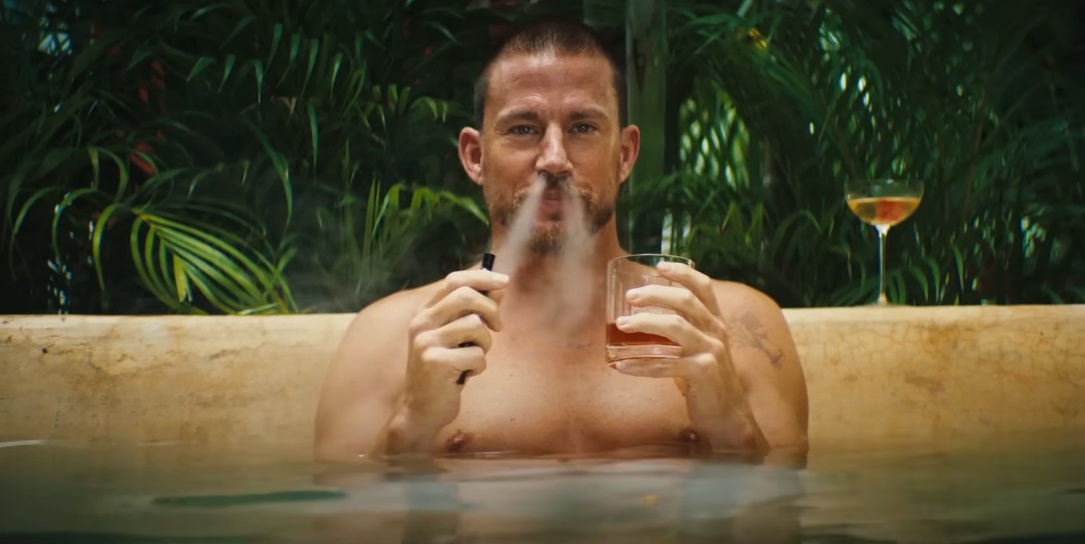
A new trailer for the movie formerly known as Pussy Island just dropped and it has us intrigued. Now with the more restrained title, Blink Twice, this Zoë Kravitz-directed black comedy is set to land in theaters on August 23.
The film is packed with stars including Channing Tatum, Naomi Ackie, Alia Shawkat, Simon Rex, Adria Arjona, Haley Joel Osment, Christian Slater, Kyle MacLachlan, and Geena Davis.
The trailer feels like a Benoit Blanc mystery; people are invited to a secluded location and disappear one by one, leaving one guest to figure out what is going on.
In the film, a billionaire named Slater King (Channing Tatum) invites a waitress named Frida (Naomi Ackie) to his private island, “It’s paradise. Wild nights blend into sun-soaked days and everyone’s having a great time. No one wants this trip to end, but as strange things start to happen, Frida begins to question her reality. There is something wrong with this place. She’ll have to uncover the truth if she wants to make it out of this party alive.”
'Civil War' Review: Is It Worth Watching?
Follow our new YouTube channel "Mysteries and Movies" here.
Movies
Melissa Barrera Says ‘Scary Movie VI’ Would Be “Fun To Do”

Melissa Barrera might literally get the last laugh on Spyglass thanks to a possible Scary Movie sequel. Paramount and Miramax are seeing the right opportunity to bring the satirical franchise back into the fold and announced last week one might be in production as early as this fall.
The last chapter of the Scary Movie franchise was almost a decade ago and since the series lampoons thematic horror movies and pop culture trends, it would seem they have a lot of content to draw ideas from, including the recent reboot of slasher series Scream.
Barerra, who starred as final girl Samantha in those movies was abruptly fired from the latest chapter, Scream VII, for expressing what Spyglass interpreted as “antisemitism,” after the actress came out in support of Palestine on social media.
Even though the drama wasn’t a laughing matter, Barrera might get her chance to parody Sam in Scary Movie VI. That is if the opportunity arises. In an interview with Inverse, the 33-year-old actress was asked about Scary Movie VI, and her reply was intriguing.
“I always loved those movies,” the actress told Inverse. “When I saw it announced, I was like, ‘Oh, that would be fun. That would be so fun to do.’”
That “fun to do” part could be construed as a passive pitch to Paramount, but that’s open to interpretation.
Just like in her franchise, Scary Movie also has a legacy cast including Anna Faris and Regina Hall. There is no word yet on if either of those actors will appear in the reboot. With or without them, Barrera is still a fan of the comedies. “They have the iconic cast that did it, so we’ll see what goes on with that. I’m just excited to see a new one,” she told the publication.
Barrera is currently celebrating the box office success of her latest horror movie Abigail.
'Civil War' Review: Is It Worth Watching?
Follow our new YouTube channel "Mysteries and Movies" here.
Lists
Thrills and Chills: Ranking ‘Radio Silence’ Films from Bloody Brilliant to Just Bloody
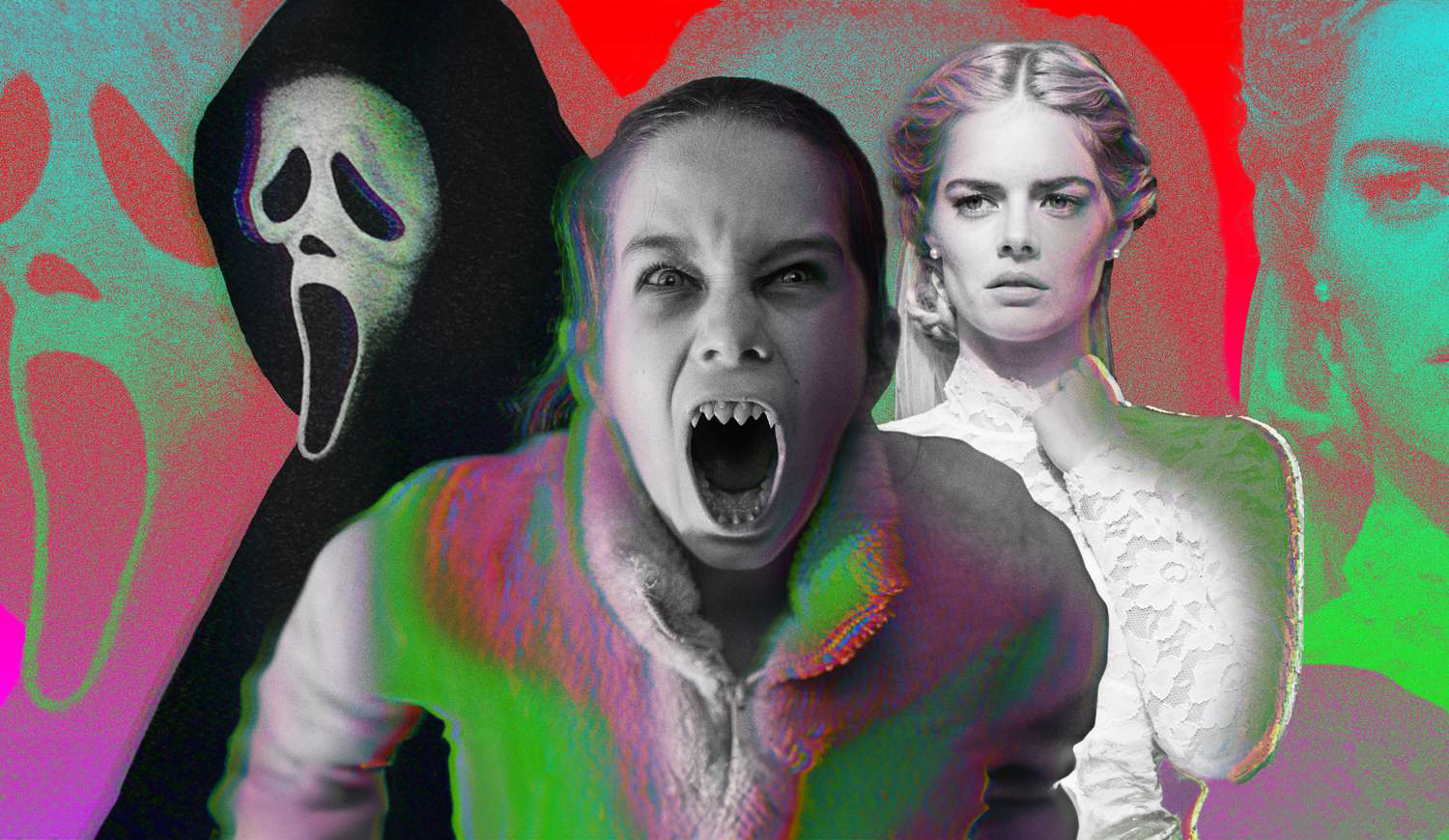
Matt Bettinelli-Olpin, Tyler Gillett, and Chad Villella are all filmmakers under the collective label called Radio Silence. Bettinelli-Olpin and Gillett are the primary directors under that moniker while Villella produces.
They have gained popularity over the past 13 years and their films have become known as having a certain Radio Silence “signature.” They are bloody, usually contain monsters, and have breakneck action sequences. Their recent film Abigail exemplifies that signature and is perhaps their best film yet. They are currently working on a reboot of John Carpenter’s Escape From New York.
We thought we would go through the list of projects they have directed and rank them from high to low. None of the movies and shorts on this list are bad, they all have their merits. These rankings from top to bottom are just ones we felt showcased their talents the best.
We didn’t include movies they produced but didn’t direct.
#1. Abigail
An update to the second film on this list, Abagail is the natural progression of Radio Silence’s love of lockdown horror. It follows in pretty much the same footsteps of Ready or Not, but manages to go one better — make it about vampires.
#2. Ready or Not
This film put Radio Silence on the map. While not as successful at the box office as some of their other films, Ready or Not proved that the team could step outside their limited anthology space and create a fun, thrilling, and bloody adventure-length film.
#3. Scream (2022)
While Scream will always be a polarizing franchise, this prequel, sequel, reboot — however you want to label it showed just how much Radio Silence knew the source material. It wasn’t lazy or cash-grabby, just a good time with legendary characters we love and new ones who grew on us.
#4 Southbound (The Way Out)
Radio Silence tosses their found footage modus operandi for this anthology film. Responsible for the bookend stories, they create a terrifying world in their segment titled The Way Out, which involves strange floating beings and some sort of time loop. It’s kind of the first time we see their work without a shaky cam. If we were to rank this entire film, it would remain at this position on the list.
#5. V/H/S (10/31/98)
The film that started it all for Radio Silence. Or should we say the segment that started it all. Even though this isn’t feature-length what they managed to do with the time they had was very good. Their chapter was titled 10/31/98, a found-footage short involving a group of friends who crash what they think is a staged exorcism only to learn not to assume things on Halloween night.
#6. Scream VI
Cranking up the action, moving to the big city and letting Ghostface use a shotgun, Scream VI turned the franchise on its head. Like their first one, this film played with canon and managed to win over a lot of fans in its direction, but alienated others for coloring too far outside the lines of Wes Craven’s beloved series. If any sequel was showing how the trope was going stale it was Scream VI, but it managed to squeeze some fresh blood out of this nearly three-decade mainstay.
#7. Devil’s Due
Fairly underrated, this, Radio Silence’s first feature-length film, is a sampler of things they took from V/H/S. It was filmed in an omnipresent found footage style, showcasing a form of possession, and features clueless men. Since this was their first bonafide major studio job it’s a wonderful touchstone to see how far they have come with their storytelling.
'Civil War' Review: Is It Worth Watching?
Follow our new YouTube channel "Mysteries and Movies" here.
-

 News6 days ago
News6 days agoWoman Brings Corpse Into Bank To Sign Loan Papers
-

 News5 days ago
News5 days agoBrad Dourif Says He’s Retiring Except For One Important Role
-

 Strange and Unusual5 days ago
Strange and Unusual5 days agoMan Arrested for Allegedly Taking a Severed Leg From Crash Site And Eating It
-

 Movies6 days ago
Movies6 days agoPart Concert, Part Horror Movie M. Night Shyamalan’s ‘Trap’ Trailer Released
-
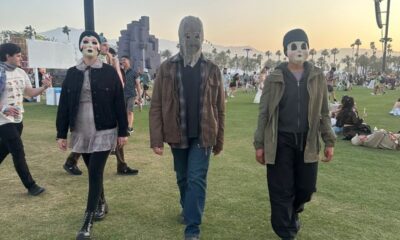
 Movies7 days ago
Movies7 days ago‘The Strangers’ Invaded Coachella in Instagramable PR Stunt
-

 Movies6 days ago
Movies6 days agoAnother Creepy Spider Movie Hits Shudder This Month
-
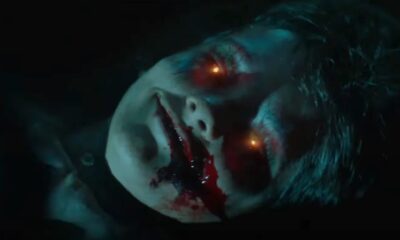
 Movies7 days ago
Movies7 days agoRenny Harlin’s Recent Horror Movie ‘Refuge’ Releasing in U.S. This Month
-
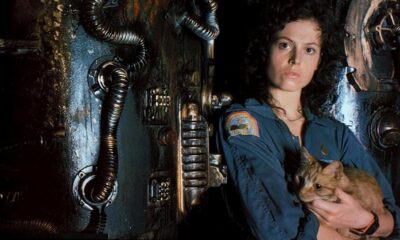
 Movies7 days ago
Movies7 days ago‘Alien’ Returning to Theaters For a Limited Time
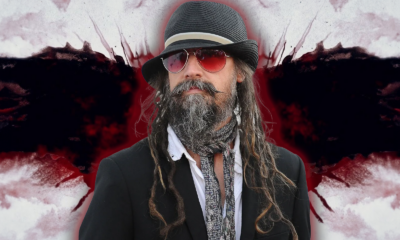

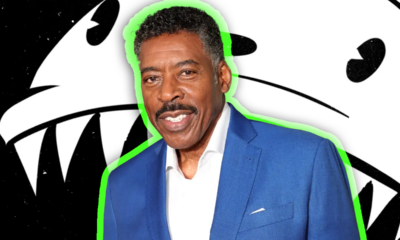

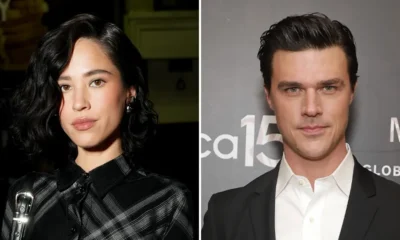




















You must be logged in to post a comment Login